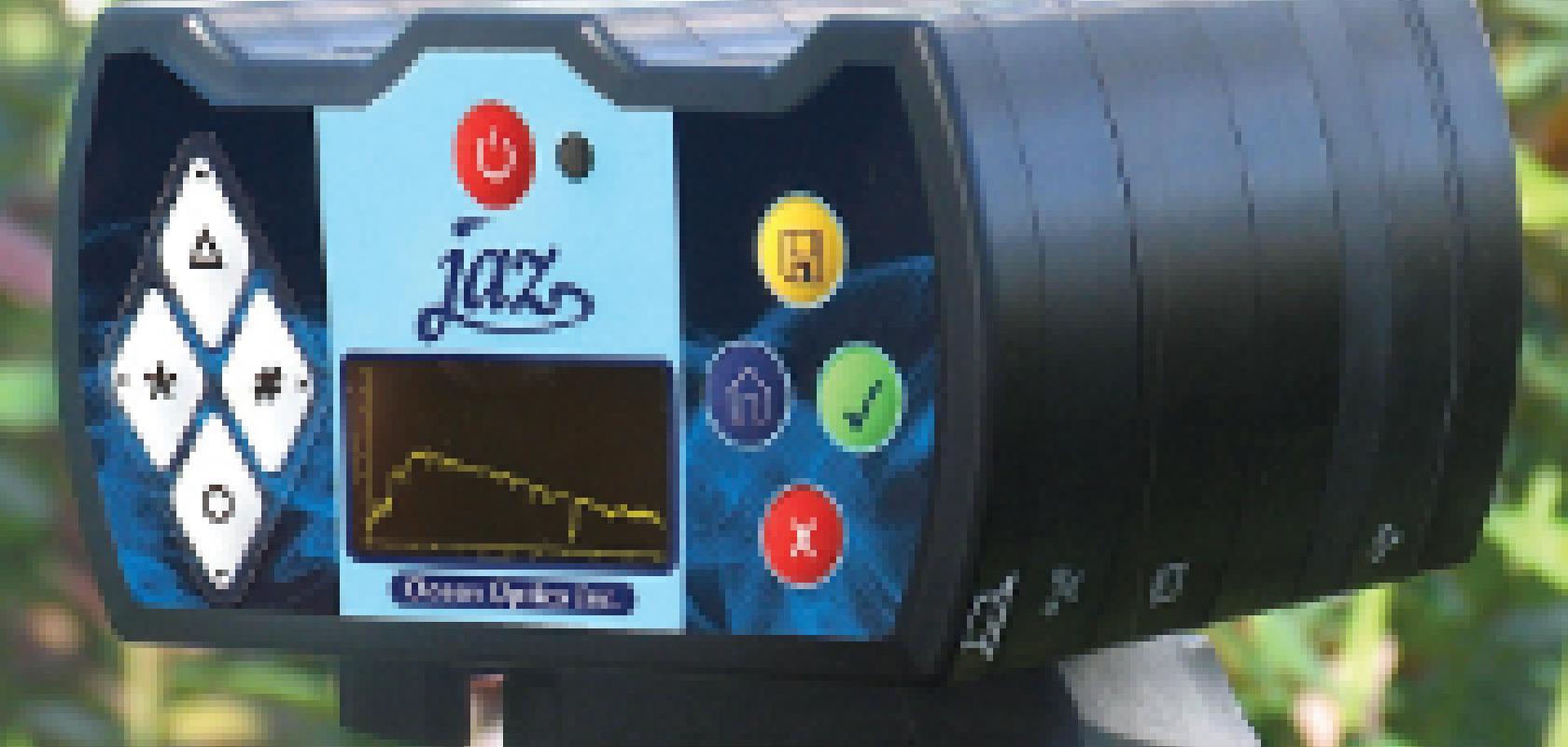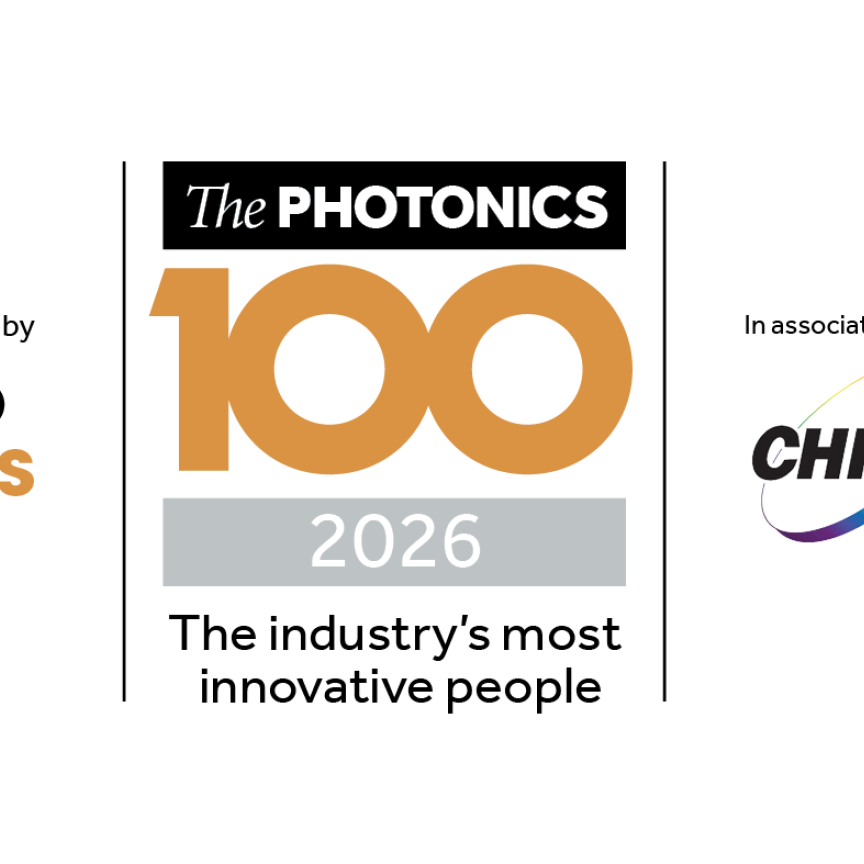Mobile devices are ubiquitous in society today and advances in spectroscopy are reflecting this trend with miniaturisation. Customers now expect the smartphone experience with their spectrometer, with features such wireless internet, Bluetooth and ever improving performance with semiconductor-like technology.
‘We need to look to offer more mobile instruments, and the packaging to make it more sexy, similar to what Apple has done with the Ipod; it’s nothing more than an mp3 player but it lasts a little longer with the battery and it looks sexy,’ says Avantes chief executive officer Benno Oderkerk. Avantes spectrometers are small, at less than 500g and so can be portable. They can operate independently of a desktop computer and are used in agriculture in what is called green tech. For example, in greenhouses users carry out measurements on light conditions or reflections from the leaves, examining the amount and quality of the chlorophyll present. The portable spectrometer will generate the data but there is some onboard data processing capability translating it into functions to measure. Avantes products have other uses, the company makes generic instruments because its spectrometers are used for so many applications. And like today’s smartphones Oderkerk explains that future improvements for their spectrometers include: ‘longer [battery] life time, shorter high current charging, and more easily replaceable battery packs.’
Ibsen provides handheld spectrometers for the medical market for detecting the likes of cholera, or for using the visible or infrared wavelengths for examining food. Like Oderkerk, Thomas Rasmussen, Ibsen Photonics, says: ‘We see a strong trend for people to want to miniaturise.’ Rasmussen also sees competitive advantage in miniaturisation. ‘We see those two things [miniaturisation and lower costs] go hand in hand, if you make things smaller it becomes lower cost because various devices become smaller and so cheaper,’ he says. Below the $1,000 price tag there is a market for spectrometer modules that have, according to Rasmussen, ‘reasonable performance’, for instance 1-4nm resolution, low stray light, and good sensitivity. While 20-100nm resolution can be achieved with much simpler and lower cost devices, typically $10-$100, based on light emitting diodes and colour filters.
‘The sub-$1,000, 1-4nm resolution spectrometer market is the segment we are targeting with our new compact Freedom spectrometer and we see a strong demand for the combination of compact size and good performance. Our module is just 25 x 48 x 16mm and provides resolution down to 1nm. Naturally, other spectrometer suppliers target the same segment,’ explains Rasmussen, ‘Ocean Optics’ STS module for example.’ One technical aspect driving this miniaturisation and increased performance dynamic is the ability to use semiconductor-like manufacturing technologies with wafers upon which gratings are made.
However, there is a drawback to using semiconductor-like replication techniques: they can ruin the stray light performance, which means the noise in the system can get worse. ‘But we think we have got around that,’ adds Rasmussen.
According to Rasmussen, Ibsen can get several hundred gratings on the same wafer, which is how they get the volume of scale benefits akin to semiconductors’ production. ‘Adding more gratings to the wafer will improve device performance further,’ adds Rasmussen.
For medical and food analysis the goal is to have both low cost and higher performance modules using Raman spectroscopy for detecting various drugs. But it is hard to get the high Raman resolution required from small modules. One option is to use the cheaper portable spectrometers to quickly check batches of foodstuffs and other products and to then take suspect material to the laboratory for a more detailed inspection. Rasmussen explains that carrying out quality control checks on pharmaceuticals is one application area, ‘if you can do it on site you can know within a few minutes if the lot is OK or not and if you find something you have to send it to a laboratory.’
That difference between the laboratory and the environment on the shop floor or in the field is of concern to Laser Quantum sales and marketing vice president Barney Mitchell. ‘In going from the lab to something portable, there is the challenge of increased shocks and less stable temperatures. The environment is far less controlled.’ And by shock Mitchell includes spectrometers being dropped. A drop from waist height will deliver a shock equivalent to 1,000 g, which is devastating for most lasers. Mitchell adds that customers are looking for a single frequency laser so they can get the highest possible resolution. ‘Laser Quantum has an actively locked single frequency laser that has solved those problems, but with size and weight being key considerations, a multimode laser allows for a far more compact solution, and these are inherently more stable than single frequency lasers in terms of both wavelength and power,’ says Mitchell but he warns, ‘for portable spectrometers, Raman single frequency lasers often don’t behave very well; unless actively mode locked they can drift across large wavelength ranges and mode hop and it becomes very difficult to get repeatable results. A multimode laser with a bandwidth of 30GHz over one wavenumber will give excellent repeatability, albeit at slightly lower resolution.’
With an unlocked single frequency laser, it is possible to get a drift across 1-2 wavenumbers for just a plus or minus one degree temperature change. With a multimode laser you can get 5pm repeatability across 20 degree temperature range.Multimode lasers also have better shock resistance as intra-cavity alignment is less critical.
Mitchell explains that for Raman spectrometer applications 785nm has been the traditional wavelength but now the industry is seeing increasing interest in 532nm, a useful wavelength for biological samples and organic compounds. ‘There is an interest at 660nm, because there is a hydrogen line that disappears off the end of the silicon response range if you go any further into the infrared,’ comments Mitchell. ‘Then if you go any further into the green you see increased fluorescence and you lose the Raman signal that way.’ A popular wavelength, according to Mitchell, for surface enhanced Raman spectroscopy, is 671nm or 660nm. ‘We are seeing uses for that [wavelength] in the food industry, for detecting chemicals that shouldn’t be there, and in homeland security 532nm is preferred for the forensics of chemical detection and counterfeit substance detection.’
Delivering laboratory-like services in the field is also a goal for Hamamatsu. Ray Livingstone, sales engineer, says, ‘Hamamatsu’s mini-spectrometers are small, USB devices that can be taken on site to make measurements in real time rather than having to take the sample back to the laboratory.’ Applications include measuring water and air pollution, solar radiation, as well as in forensic science. Livingstone explains: ‘Generally, a fibre light source is used to illuminate a cuvette holding the sample. In the case of testing for nitrates in water systems, UV light would excite the nitrates to fluoresce, which could then be measured by the UV spectrometer positioned at 90° to the sample. A trace of intensity verses wavelength can then be viewed on a computer, with the intensity of light at a specific wavelength corresponding to the concentration of nitrates present in the sample.’
Some laboratory-based spectrometers are heavy and bulky and have moving parts. The fibre-optic portable spectrometers have no moving parts and therefore are a lot more robust. Hamamatsu’s Micro Electro Mechanical Systems (MEMS) spectrometer is fabricated as a single substrate. The diffraction slit is etched into the CMOS sensor using a femtosecond laser and the grating itself is fabricated on the lens by nanoprinting. ‘Everything is on a single substrate manufactured by MEMS techniques, and because of this, it is very small, has a good alignment, and low light losses. Larger lab-based spectrometers typically contain separate image sensors, gratings, and optics, which all take up space. In addition, there are numerous optics in the setup, so there can be a lot of stray light, which disturbs the measurement.’
The drawback of manufacturing the detector as a single substrate is that the spectral resolution is somewhat limited, but in some applications this isn’t deemed as crucial. The spectral resolution with these devices is around 12-14nm but with larger laboratory-based spectrometers the resolution can be 1nm or better. The range of Hamamatsu’s mini-spectrometers is between 340-750nm, which is sufficient for the visible and the far-UV region. Most applications such as pollution measurements, environmental sensing, solar thin film analysis, and forensics are all sensitive in the UV, visible, and near-infrared. Another application is blood analysis and looking at the presence of proteins in blood samples. ‘The MEMS technology allows spectrometers to be fabricated much smaller now. The sensors and optics are made smaller with nanofabrication techniques. The Hamamatsu MEMS spectrometer weighs only 9g and measures 27.6 x 13 x 16.8mm,’ says Livingstone.
Ocean Optics is another company that is adapting to the new expectations customers have for mobile devices. ‘Definitely the customers are expecting a nice colour screen and easy touchpad devices as they are used to that. Our Jaz platform is one way of going about that [for consumer-like devices], it has a screen and buttons built in,’ says Ocean Optics sales and marketing director Marco Snikkers. ‘It is used by research scientists for all types of field applications.’ The Jaz platform, introduced two years ago, is a spectrometer that is built up from various modules and a module can have a very specific functionality. It could include one or more optical spectrometers, a light source, ethernet and a battery module. Its brain is a Linux computer with a keypad and display.
Ocean has a history of spectrometer miniaturisation, 20 years ago it created a spectrometer to be used in the field of ocean research. ‘Since then we’ve developed quite a lot of spectrometers; you must be able to carry the spectrometer to the sample,’ says Snikkers. ‘Our customers have been looking for a low cost and small spectrometer and for that we developed the STS micro-spectrometer, which is very small about 2 x 2 x 2cm. It has very high resolution and can serve similar applications as our regular spectrometers.’ Another low cost approach Ocean is taking is to extend its ColorBug range to add more channels for spectroscopy type applications, and one of the products will be called SpectraBug. Snikkers says: ‘I think one day the devices will be multispectral. Spectroscopy is really becoming a commodity in this respect and the volumes are getting larger and larger.’
Whatever the volumes, spectrometers are getting smaller and like all other mobile devices the trend, whether it is a phone or a sensor, is to get smaller, cheaper, energy efficient and with more functions.



